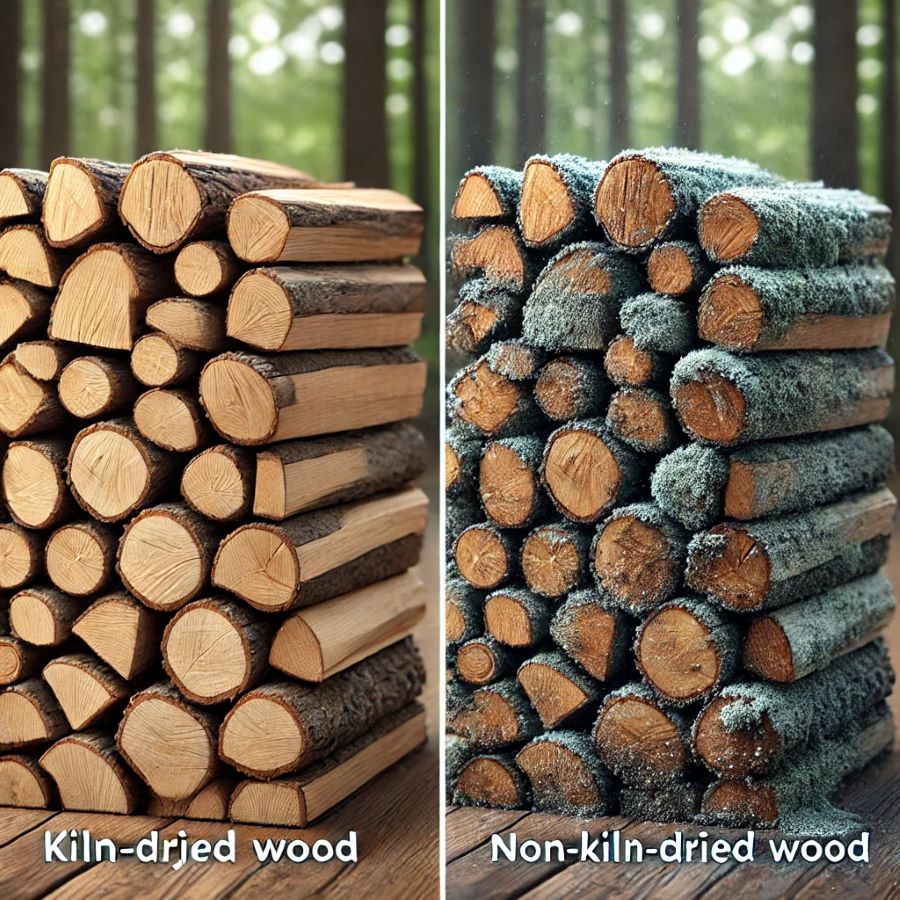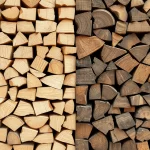When shopping for firewood, you might come across the term “killn-dried wood.” But what exactly does it mean, and how does it compare to non-kiln-dried alternatives? Whether you’re heating your home, cooking in a pizza oven, or enjoying a cozy firepit, understanding the differences can help you make a smarter choice.

What Is Kiln-Dried Wood?
Kiln-dried wood is firewood that has been dried in a controlled environment using a kiln. A kiln is a large, industrial oven designed to remove moisture from wood efficiently. The drying process exposes the wood to high temperatures for a specific period, typically reducing its moisture content to below 20%.
In contrast, non-kiln-dried wood, often referred to as “seasoned wood,” dries naturally over time, typically taking six months to a year to reach a comparable moisture level. However, this process can be inconsistent and dependent on environmental factors like weather and storage conditions.
Benefits of Kiln-Dried Wood
1. Higher Efficiency
Kiln-dried wood burns hotter and more efficiently than non-kiln-dried wood. The low moisture content allows the wood to ignite faster and produce a consistent flame, making it ideal for cooking in pizza ovens or maintaining steady heat in fireplaces.
2. Reduced Smoke and Creosote Build-Up
Excess moisture in non-kiln-dried wood creates more smoke and contributes to creosote build-up in chimneys, which can pose a fire hazard. Kiln-dried wood produces cleaner burns, reducing the risk and maintenance required.
3. Pest and Mold-Free
The high temperatures used in kiln drying kill pests, mold, and fungi that can often inhabit naturally dried wood. This makes kiln-dried wood a safer and cleaner option for indoor use.
4. Convenience
Kiln-dried wood is ready to use immediately. There’s no need to wait for it to season or worry about improper storage leading to reabsorption of moisture.
5. Longer Shelf Life
Because kiln-dried wood is thoroughly dried and often stored under controlled conditions, it’s less likely to degrade over time compared to seasoned wood, which can absorb moisture if stored improperly.
When to Choose Non-Kiln-Dried Wood
Non-kiln-dried wood can still be a good choice in certain situations. If you have time to season the wood yourself, access to proper storage, and are looking for a more budget-friendly option, it can work well for outdoor firepits or campfires where efficiency and cleanliness are less critical.
Choosing the Right Firewood for Your Needs
When deciding between kiln-dried and non-kiln-dried wood, consider your specific needs:
- Cooking: Kiln-dried wood is ideal for pizza ovens and grilling due to its consistent heat and clean burn.
- Indoor Heating: Use kiln-dried wood for fireplaces and stoves to reduce smoke and creosote.
- Outdoor Fires: Seasoned wood may suffice for casual campfires but ensure it’s adequately dried to avoid excess smoke.
While kiln-dried wood may come at a slightly higher price, its benefits—efficiency, cleanliness, and convenience—often outweigh the cost. Understanding these differences helps you make informed decisions for a better, safer, and more enjoyable firewood experience.
Ready to experience the difference? Explore our range of kiln-dried firewood and find the perfect wood for your next fire. Shop Now
